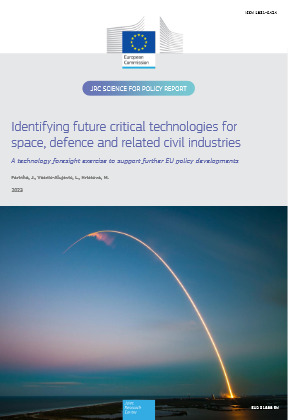Last Edited: a year ago
Identifying Future Critical Technologies for Space, Defence and Related Civil IndustriesDecember 2022
A Technology Foresight Exercise to Support Further EU Policy Developments
This publication is a Science for Policy report by the Joint Research Center (JRC), the European Commissions's science and knowledge service.
It aims to provide evidence-based scientific support to the European policymaking process. The contents of this publication do not necessarily reflect the position or opinion of the European Commission. Neither the European Commission nor any person acting on behalf of the Commission is responsible for the use that might be made of this publication. This report is based on research of the JRC. It does neither include any information or data collected in the context of the EU Observatory of Critical Technologies, nor does it prejudge the future work of the Observatory. For information on the methodology and quality underlying the data used in this publication for which the source is neither Eurostat nor other Commission services, users should contact the referenced source. The designations employed and the presentation of material on the maps do not imply the expression of any opinion whatsoever on the part of the European Union concerning the legal status of any country, territory, city or area or of its authorities, or concerning the delimitation of its frontiers or boundaries.
Posted on: 10/11/2024

